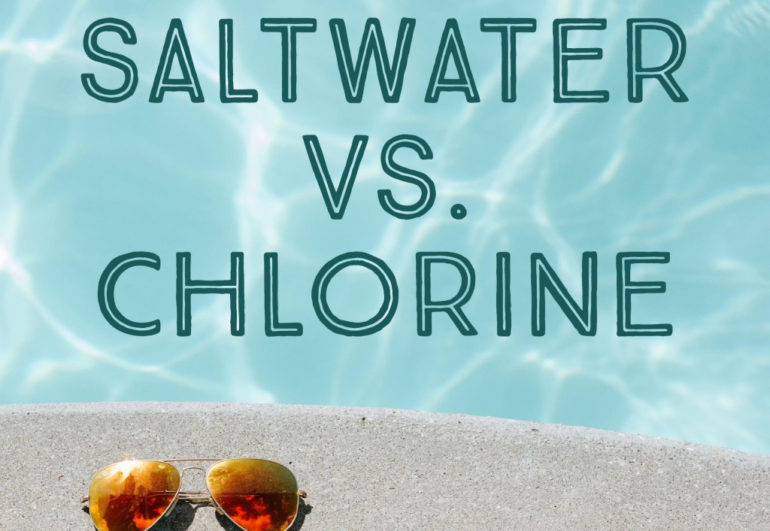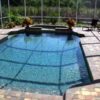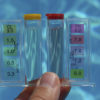Have you ever been swimming in a Tampa swimming pool and ended up with red, irritated eyes?
Have you ever gotten all ready to go for a swim in hotel swimming pool or community swimming pool, and when you got there you were disappointed to discover the pool was closed because it had gotten a chlorine shock treatment?
Have you ever gotten all ready to go for a swim in hotel swimming pool or community swimming pool, and when you got there you were disappointed to discover the pool was closed because it had gotten a chlorine shock treatment?
The Old Way to Chlorinate;
Chlorine is the primary chemical used to keep a pool clean. As chlorine is exposed to sunlight and kills algae and other microorganisms, it's concentration decreases and needs to be replaced. For decades, pool systems used a combination of slow-dissolving chlorine tablets along with weekly dose of highly concentrated liquid chlorine to keep the pool clean and maintain the proper chlorine concentration for the pool water.
When new chlorine tablets are added, their surface area is large, they dissolve more quickly, and the chlorine concentration of the water can be too high. Then as the tablets get smaller, less chlorine dissolves into the water, making the chlorine concentration too low. When the chlorine concentration is too low, algae grows. Algae is then treated with highly-concentrated liquid chlorine. This causes the chlorine concentration of the pool water to dramatically increase to the point that it irritates people's eyes.
These dramatic swings in chlorine concentration can reduce the life of the pool, and be frustrating, time consuming, and unhealthy for swimmers. For decades, people just accepted it because it seemed like there weren't any better alternatives. But that is no longer the case.
We now have the option of a saltwater chlorination system that eliminates the dramatic fluctuations in chlorine levels.
This is how salt chlorination systems work: A large bag of salt is poured into the system. The salt dissolves, and the saltwater flows through a cell where a low-voltage direct current is applied. This electrolysis process converts the saltwater into hydrogen gas and hypochlorous acid. The hypochlorous acid keeps the pool clean while the hydrogen gas harmlessly bubbles out of the water.
When new chlorine tablets are added, their surface area is large, they dissolve more quickly, and the chlorine concentration of the water can be too high. Then as the tablets get smaller, less chlorine dissolves into the water, making the chlorine concentration too low. When the chlorine concentration is too low, algae grows. Algae is then treated with highly-concentrated liquid chlorine. This causes the chlorine concentration of the pool water to dramatically increase to the point that it irritates people's eyes.
These dramatic swings in chlorine concentration can reduce the life of the pool, and be frustrating, time consuming, and unhealthy for swimmers. For decades, people just accepted it because it seemed like there weren't any better alternatives. But that is no longer the case.
We now have the option of a saltwater chlorination system that eliminates the dramatic fluctuations in chlorine levels.
This is how salt chlorination systems work: A large bag of salt is poured into the system. The salt dissolves, and the saltwater flows through a cell where a low-voltage direct current is applied. This electrolysis process converts the saltwater into hydrogen gas and hypochlorous acid. The hypochlorous acid keeps the pool clean while the hydrogen gas harmlessly bubbles out of the water.
The primary benefit of a saltwater system is that it keeps the chlorine concentration relatively constant even when weather and pool conditions change. It does this by constantly measuring the chlorine concentration and adjusting the current to control amount of hypochlorous acid produced. As a result, no matter how much rain, debris or people enter the pool, the saltwater system automatically adjusts to keep the chlorine concentration in the desired range. For most salt systems, the only maintenance needed is to add a bag of salt to the system a few times a year.
There is an up-front cost to purchase and install a salt system, but because salt is much less expensive than liquid chlorine and chlorine tablets, the ongoing cost is lower.
Safer and Simpler
Which brings up another benefit to having a salt system: you don't have to store liquid chlorine or chlorine tablets around your home, eliminating a potentially dangerous or damaging situation if spilled or fumes are inhaled. Also, you don't have to transport them in your car, eliminating the possibility of chlorine stains, smells, and spills that can damage your vehicle.
Which brings up another benefit to having a salt system: you don't have to store liquid chlorine or chlorine tablets around your home, eliminating a potentially dangerous or damaging situation if spilled or fumes are inhaled. Also, you don't have to transport them in your car, eliminating the possibility of chlorine stains, smells, and spills that can damage your vehicle.
Finally, since you won't have to make regular trips to the pool supply store for chlorine, so can you spend less time maintaining your pool and more time enjoying your pool.
Time to Upgrade
If you are interested in upgrading your pool to a saltwater chlorination system or if you're looking for an experienced, expert pool builder to take care of your swimming pool remodeling, swimming pool construction, or swimming pool design in Tampa, Trinity, Tarpon Springs or anywhere in the bay area, contact us at Grand Vista Pools!
















